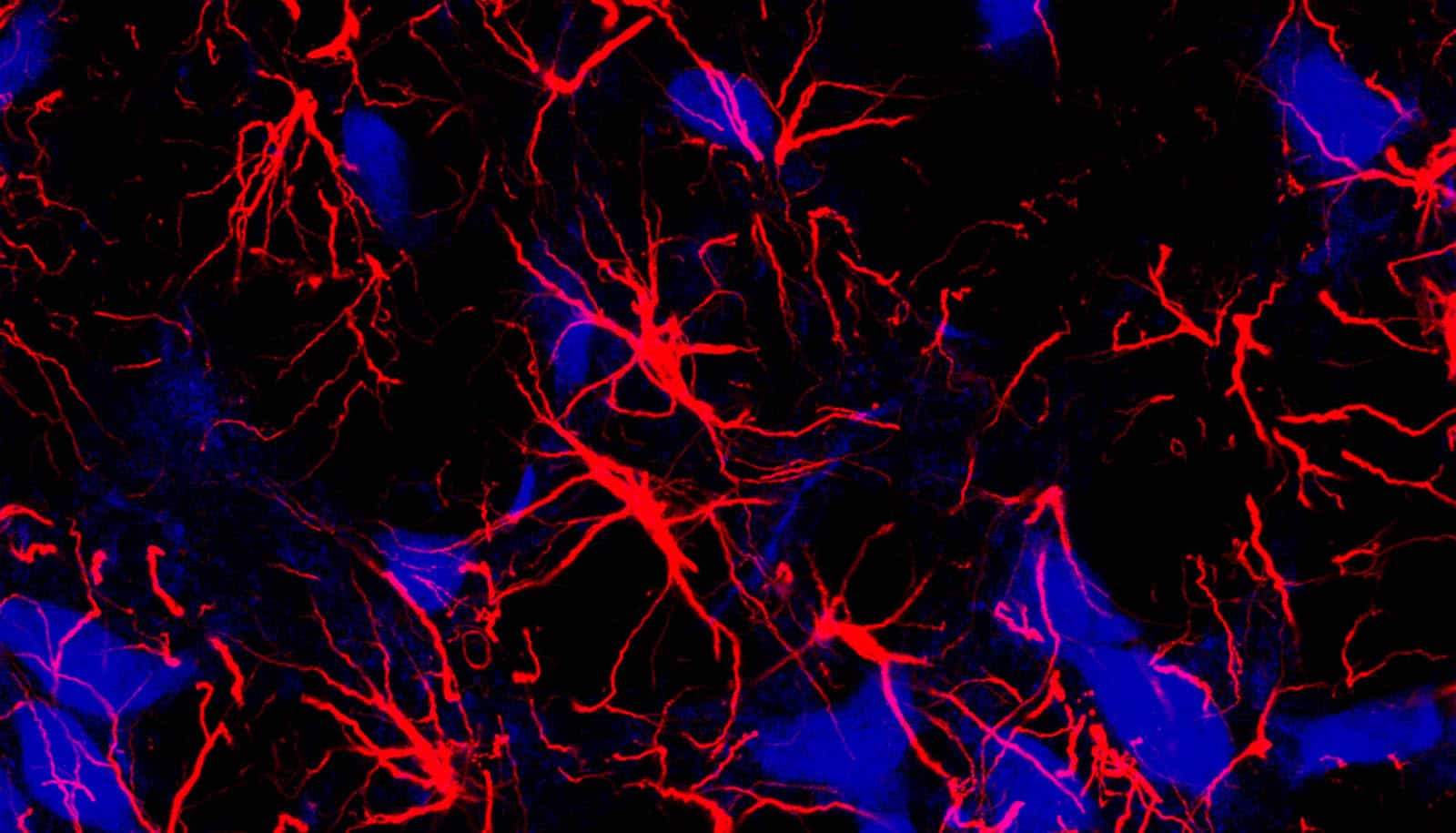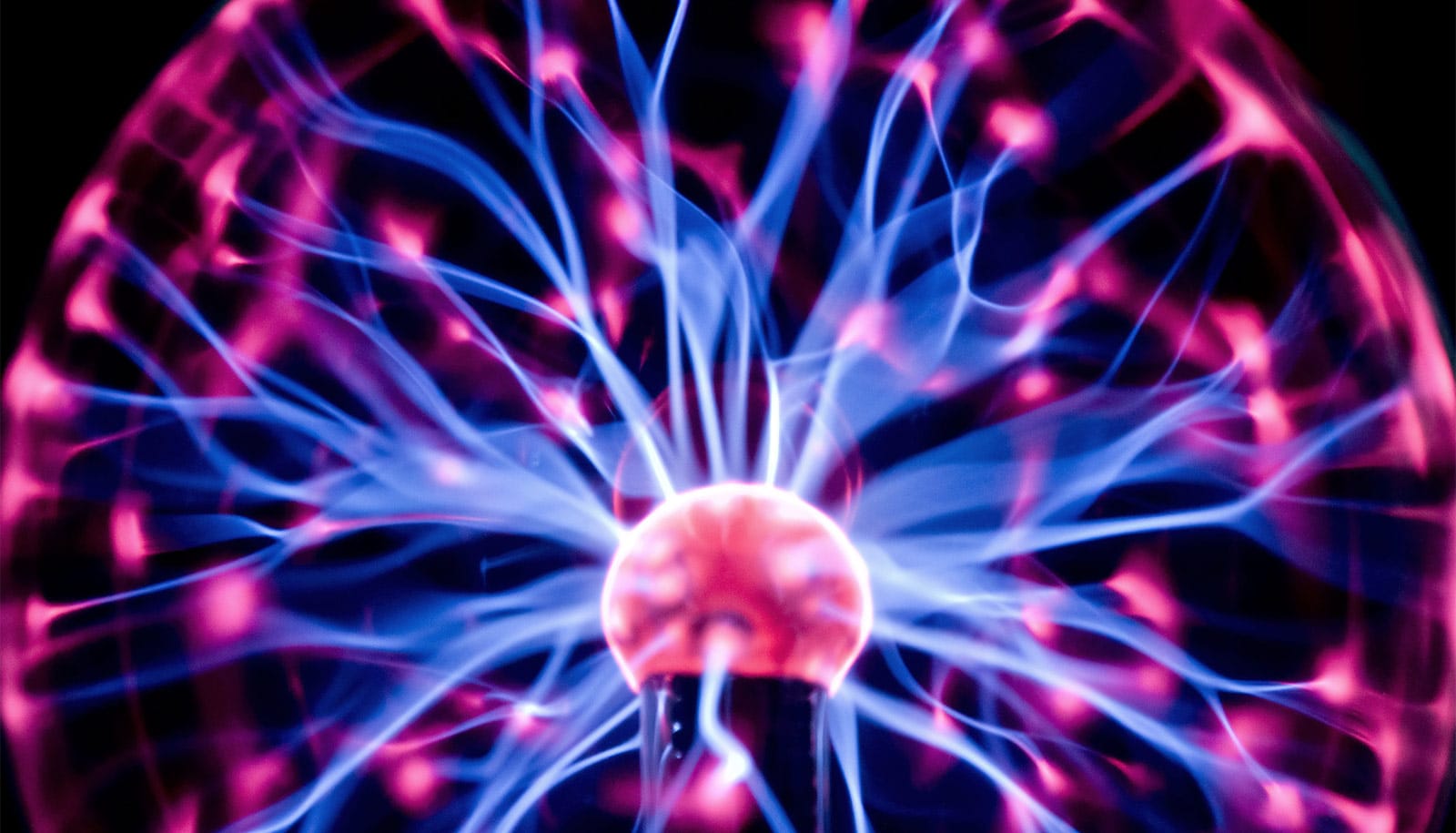Researchers have discovered a previously unknown function performed by cells called astrocytes, which comprise nearly half of all cells in the brain.
The discovery in mice of a new function for astrocytes opens a new direction for neuroscience research that might one day lead to treatments for disorders such as epilepsy, Alzheimer’s, and traumatic brain injury, scientists say.
It comes down to how astrocytes interact with neurons, which are fundamental cells of the brain and nervous system that receive input from the outside world. Through a complex set of electrical and chemical signaling, neurons transmit information between different areas of the brain and between the brain and the rest of the nervous system.
Until now, scientists believed astrocytes were important, but lesser cast members in this activity. Astrocytes guide the growth of axons, the long, slender projection of a neuron that conducts electrical impulses. They also control neurotransmitters, chemicals that enable the transfer of electrical signals throughout the brain and nervous system. In addition, astrocytes build the blood-brain barrier and react to injury.
But they did not seem to be electrically active like the all-important neurons—until now.
“The electrical activity of astrocytes changes how neurons function,” says Chris Dulla, associate professor of neuroscience at the Tufts University School of Medicine and Graduate School of Biomedical Sciences, and corresponding author of the study in Nature Neuroscience.
“We have discovered a new way that two of the most important cells in the brain talk to each other. Because there is so much unknown about how the brain works, discovering new fundamental processes that control brain function is key to developing novel treatments for neurological diseases.”
Astrocyte control
To make the discovery, the team used new technology to devise a technique that enables them to see and study the electrical properties of brain cell interactions, which could not be observed previously.
“With these new tools, we’ve essentially uncovered completely novel aspects of the biology,” says lead author Moritz Armbruster, research assistant professor of neuroscience at the School of Medicine. “As better tools come along—for example, new fluorescent sensors are being developed constantly—we’ll get a better understanding of things we didn’t even think about before.”
“The new technology images electrical activity with light,” Dulla explains. “Neurons are very electrically active, and the new technology allows us to see that astrocytes are electrically active, as well.”
Dulla describes astrocytes as “making sure everything is copacetic in the brain, and if something goes wrong, if there’s an injury or viral infection, they detect it, try to respond, and then try to protect the brain from insult. What we want to do next is determine how astrocytes change when these insults happen.”
Neuron-to-neuron communication occurs through the release of packets of chemicals called neurotransmitters. Scientists knew that astrocytes control neurotransmitters, helping to make sure that neurons stay healthy and active. But the new study reveals that neurons also release potassium ions, which change the electrical activity of the astrocyte and how it controls the neurotransmitters.
“So the neuron is controlling what the astrocyte is doing, and they are communicating back and forth. Neurons and astrocytes talk with each other in a way that has not been known about before,” he says.
Neuron-astrocyte interactions
The discovery of astrocyte-neuron crosstalk raises numerous questions as to how the interactions work in brain pathology and in the development of learning and memory. “It makes us rethink everything astrocytes do, and how the fact that astrocytes are electrically active may be influencing a wide range of neurological diseases,” he says.
For example, in Alzheimer’s disease, astrocytes don’t control neurotransmitters, even though that is their fundamental job, Dulla explains. Similar problems occur with traumatic brain injury and epilepsy. For years scientists have thought perhaps the problem is caused by a protein being absent, or a mutation that causes a protein not to work.
“Build-up of extracellular potassium in the brain, has been hypothesized to contribute to epilepsy and migraine pathologies,” says Armbruster. “This new study gives us a better understanding of how astrocytes clear this buildup and help maintain a balance of excitation.”
The researchers are now screening existing drugs to see if they can manipulate the neuron-astrocyte interactions. “By doing so, can we one day help people learn faster or better? Can we repair a brain injury when it occurs?” Dulla asks.
The new technology used to make this discovery not only opens up new ways to think about astrocyte activity, it also provides new approaches for imaging activity through the brain. Before now, there was no way to image potassium activity in the brain, for example, or study how potassium is involved in sleep, metabolism, or injury and infection in the brain.
“We are giving these tools to other labs so they can use the same assays and techniques to study the questions they are interested in,” Dulla says. “Scientists are getting the tools to study headache, breathing, developmental disorders, and a wide range of different neurological diseases.”
Source: Julie Rafferty for Tufts University


